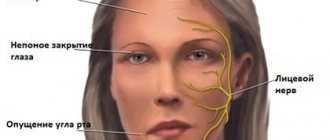Medical information is reliable Checked by Shaidullin Renat Flyurovich
Manic disorder (manic syndrome) refers to mental disorders and is most often found in bipolar disorder. The severity of manifestations varies even in the same patient, depending on the stage of the disease and the type of its course. Manic manifestations are observed as part of the symptomatology with disturbances of biochemical processes in the brain during infectious or intoxication psychosis, with organic lesions of the central nervous system. It can be provoked by the use of alcohol and drugs, and certain drugs. In turn, the disease often pushes a person to take psychotropic substances, which greatly aggravate the course of the disease.
Manic personality disorder: symptoms
The mechanisms of development of mood disorders have not yet been sufficiently studied, but its symptoms are well known. The main manifestations of manic disorder are described by a typical triad of symptoms:
- hyperthymia (inappropriate increase in mood);
- excitement (motor and mental);
- tachypsia (acceleration of thinking).
During this mental disorder there are several stages:
- hypomania;
- severe mania;
- manic frenzy;
- motor calming;
- reactive stage.
With hypomania, a person experiences an elevated mood, a feeling of cheerfulness, and elation. His speech speeds up and moderate motor agitation is noted. Some difficulties arise with the need to concentrate, distractibility increases, and constant switching to different topics or subjects. There is a slight decrease in the need for sleep and a slight increase in appetite.
In the stage of severe mania, a person experiences the same symptoms, but they gradually increase. Patients constantly make jokes and laugh. They begin to experience pronounced speech arousal with a violation of the semantic sequence. Against the backdrop of extremely positive expressions of emotions, outbursts of anger may occur. The idea of one’s own greatness dominates behavior and conversation. A person is overwhelmed with thoughts about wonderful prospects, can invest money in failed projects, but at the same time he stops taking care of himself, looks careless and sloppy. Sleep is reduced to 4 hours a day.
Manic frenzy manifests itself as follows:
- erratic motor agitation;
- complete lack of logic and connection in the conversation;
- insomnia;
- excessive appetite.
After this, the stage of motor calming begins, but speech excitation remains. There is a gradual decrease in the intensity of manifestations of mania. The reactive stage is manifested by the return of all symptoms to normal. Sometimes there is a slight deterioration in mood, inhibition of motor skills, thinking, and a feeling of fatigue. Some patients cannot remember details of behavior at advanced stages.
Paranoia: its signs
During the course of the disease, it is difficult to identify any clear stages. Sometimes the manifestation of the disease may be preceded by a prodromal period, which is characterized by mood changes. The patient is less and less likely to be in a complacent mood. Suspiciousness, gloominess, self-absorption, pickiness are typical. A person can avoid communication, provoke scandals and conflicts.
With paranoia, symptoms usually appear when what is happening is somehow related to formed delusional ideas. Otherwise, the patient does not give the impression of a mentally unhealthy person, especially during the period of remission. He takes care of his appearance, is neat, is able to maintain a logically coherent conversation, and in some cases his ability to work is preserved.
Manic disorder: classification
Manic disorder does not always manifest itself in a sequence of specific stages. In some cases, there is variability in symptoms. Depending on this, the following types of this syndrome are distinguished:
- classic mania - there is a standard picture of mental deviation with all the inherent stages and transitions;
- hypomania – all signs are present, but are not so pronounced as to change behavior and greatly reduce the quality of life;
- hyperthymic – expressed exclusively in an elevated, joyful state;
- confused - only tachypsia is noted;
- angry – increased activity against the background of worsening mood, anger, irritability;
- manic stupor – excellent mood and acceleration of the thought process against the background of motor inhibition;
- unproductive mania – good mood and activity combined with mental retardation.
Also distinguished:
- paranoid variant of mania with delusions of relationships or persecution;
- delusional – based on a sense of one’s own greatness and exclusivity;
- oneiroid - at the height of manifestations of mania, fantastic hallucinations occur.
Depressive phase
In contrast to mania, hypothymia develops with depression, lethargy and a slowdown in the pace of thinking (bradypsychia).
4 stages:
- Initial. Those who are sick have a decrease in mood and ability to perform any activity.
- Growth. Depression is filled with fears, insomnia, loss of appetite up to its complete absence.
- Pronounced clinical manifestations. Phobias reach a maximum, Patients are withdrawn. Upon contact, they express delirium, self-blame, and hypochondriacal complaints. They are at increased risk of suicide. During the examination, they voice frightening illusory pictures and hallucinations.
- Reactive. Symptoms are gradually reduced.
Doctors at our center note that patients in the hospital receive relief in the evening hours.
How does manic-depressive disorder manifest?
In clinical practice, mania is most often observed as one of the phases of manic-depressive psychosis (MDP), when there is an alternation of two phases - mania and depression (bipolar disorder). If a person has only one type of affect, then they speak of unipolar MDP. Depending on their alternation, four types of violations are distinguished:
- correctly intermittent (consecutive alternation of depression and mania divided into a light interval);
- irregularly interspersed;
- double (when one manifestation replaces another without interruption, and then there is a gap);
- circular (the most severe in course, since switching from mania to depression occurs continuously).
The typical symptoms of manic disorder in the patient are replaced by signs of depression. In bipolar disorder it happens:
- simple;
- hypochondriacal;
- delusional;
- agitated;
- anesthetic.
With its simple form, the classic triad of symptoms is noted - decreased mood, slowed thinking, motor retardation. A person’s appetite disappears, weight decreases, and libido disappears. The symptoms are strongest in the mornings and somewhat subside in the evening. The hypochondriacal form is accompanied by a person’s belief that he is terminally ill. The agitated variety occurs without motor inhibition, and “jumps of ideas” are observed. Anesthetic is accompanied by a feeling of loss of feelings, instead of which an emptiness is formed, causing anxiety.
The depressive phase of MDD occurs in several stages:
- initial;
- increasing;
- expressed;
- reactive.
Initially, there is a slight decrease in mood, tone, and performance. With increasing depression, there is an increase in symptoms, the appearance of insomnia, anxiety, loss of appetite, and a complete loss of strength. At the advanced stage, the symptoms reach their apogee. The person suffers from anxiety, melancholy, his speech becomes quiet, his thinking is inhibited. Stupor is often observed when the patient remains in one position (sitting or lying) for a long time. Anorexia often occurs, delusional ideas with self-deprecation develop, and thoughts of suicide appear. During the reactive stage, all signs subside, and asthenia may persist.
In manic-depressive psychosis, an atypical manifestation of the depressive phase is often described. In this case, there is an increase in appetite, an increase in body weight, constant drowsiness, and emotional instability. The patient is characterized by high anxiety and irritability.
According to the American classification, there are two main types of bipolar disorder. The first (BAD I) is more characterized by manic and mixed types of affects. And with the second (BAD II) – hypomania and depression. The first type is more severe and is characterized by symptoms of severe mania. In the second case, depression brings discomfort, and the manic part affects the general well-being less and resembles a mild form of euphoria.
When does it occur
Manic psychosis can occur with the following diseases:
- Bipolar affective disorder (BD);
- Schizoaffective disorder;
- Schizophrenia;
- Organic damage to the central nervous system (encephalopathy);
- Alcoholism and drug addiction in the second or third stage.
In addition, manic psychosis can be an independent disease.
Among all patients hospitalized in a state of psychosis in psychiatric hospitals, symptoms of manic psychosis are observed in approximately 20-30% of cases.
Diagnosis of manic-bipolar disorder
The criterion for diagnosing the disease is at least two recorded states of affect, provided that one of them represents a manic disorder. The Altman scale is usually used to identify impairment, and the Young rating scale helps to understand severity. The most important thing in confirming the disease is the exclusion of other pathological conditions that may be accompanied by mania:
- hyperstimulation after taking drugs or medications;
- schizophrenia;
- neurosis;
- infectious diseases;
- oligophrenia;
- psychogenic pathologies;
- intoxication;
- injuries;
- dysfunction of the thyroid gland.
More than half of patients with MDP also suffer from other types of mental disorders. This phenomenon in science is called “comorbidity”. Bipolar disorder is often combined with anxiety and substance abuse. Often, against the background of alternating mood swings, eating disorders, OCD (obsessive-compulsive disorder), and attention deficit disorder are observed.
Treatment of manic disorder in Moscow
Manic disorder of a secondary nature should be treated by stopping the causative disease. To eliminate affect in MDP and prevent another exacerbation, mood stabilizers (mood stabilizers) become the drugs of choice. These include drugs with lithium, antiepileptic drugs, atypical antipsychotics. Depending on the severity of the disease, its stage and characteristics of manifestation, both monotherapy and the combined use of medications are used.
The main goal of treating psychosis in a discrete course is to achieve long-term remission. If bipolar disorder occurs with continuous changes in phases, the goal of treatment is to reduce the manifestations of the disease.
To stop one of the phases, high doses of drugs or their rapid increase to optimal doses are required. This happens with constant monitoring of the patient’s condition. Among specialists, this method is called “aggressive psychopharmacotherapy” and is used to prevent the development of resistance. The need for medical supervision of the patient is also due to the fact that in bipolar disorder there is a risk of drug-induced phase inversion.
Assistance in the manic phase is carried out using mood stabilizers. And if it is necessary to eliminate the signs of a mixed type of MDP, atypical antipsychotics are used in combination with lithium drugs. Typical antipsychotics are not used in this case, since such patients are likely to develop extrapyramidal disorders.
The use of antidepressants to relieve the depressive phase of bipolar disorder is still disputed by many experts. They argue for their position by the high risk of developing a manic stage in patients and provoking emotional lability. Therefore, the standard of treatment in this case remains mood stabilizers, the dosage of which requires careful selection under the control of the patient’s behavior. In some cases, it is necessary to resort to the use of antidepressants, but only in short courses and in combination with behavior stabilizers. Then the inversion can be avoided.
Antidepressants are selected depending on the main manifestations of depression. When there is a decrease in activity, apathy, or melancholy, stimulant drugs are used. In cases where anxiety and anxiety predominate, anti-depression medications with a sedative effect are used.
Features of the development of mania
In some cases, manic tendencies can be a personality trait, just like apathy tendencies. Increased activity, constant mental agitation, inadequately elevated mood, outbursts of anger or aggression - all these are symptoms of manic syndrome. This is the name given to a whole group of conditions that have different causes and sometimes different symptoms.
Both various life situations and incidents, as well as uncorrected pathological character traits, lead to the development of mania. A person prone to manic behavior is very often obsessed with an idea, he strives to realize it, even if it is unrealistic. Often the patient is driven by theories that have political, religious or scientific justifications. Quite often, patients show a tendency to be active in social and community activities.
A significant proportion of manic patients have so-called overvalued thoughts and ideas. Sometimes they can be global, sometimes these are ideas at the everyday level. From the outside, the behavior of patients talking about their ideas sometimes looks quite comical. If a highly valuable thought is global in nature, the patient, on the contrary, seems thoughtful and enthusiastic to others. Especially if he has enough education and erudition to substantiate his beliefs.
This condition is not always a pathology; it can be individual characteristics of the psyche. Treatment is necessary if overvalued thoughts and ideas get out of control and consume the patient’s entire life, in other words, interfere with the life of himself or those around him.
Manic affective disorder: psychotherapy
To obtain long-term remission in manic disorder or MDP, both medications and modern psychotherapeutic techniques should be used. Only in this case can a stable and long-term remission be achieved. Its tasks are:
- expansion of self-knowledge;
- building a personality project;
- formation of an adequate self-image;
- training in self-control skills;
- improvement of functioning in the professional sphere and society.
The circumstances of any person’s life are replete with stress, which are risk factors for manic disorder and MDP. Psychotherapy helps to cope with them and prevents another exacerbation.
The following methods of psychotherapy are considered the most effective for this disease:
- cognitive-behavioural;
- interpersonal;
- family;
- social support;
- rhythm therapy;
- compliance therapy.
According to the protocol for the treatment of bipolar disorder, cognitive behavioral therapy takes first place in preventing the development of affects. It helps identify the patient's irrational thoughts, unproductive or harmful ideas and emotions. The technique changes them to constructive ones and thereby indirectly affects the biochemical processes of the brain. As a result of successfully conducted interpersonal therapy, a person learns to manage his reactions, change negative to positive, and thereby maintain a sufficient level of serotonin. He is able to identify early signs of hypomania or depression, and take measures to relieve them before the development of pronounced symptoms of pathology. His vulnerability to situations that act as disease triggers is reduced.
Family emotionally focused therapy has also shown high effectiveness in the complex treatment of patients with manic disorder.
It allows the patient:
- accept the inevitability of the occurrence of affective states;
- understand your needs and express them out loud;
- make sure of the need for lifelong intake of mood stabilizers;
- learn to resist stress and difficulties that provoke MDP.
Many people suffering from manic-depressive disorder sometimes lack words to explain their feelings. Instead of saying that they need attention, warmth and care, they talk about their desire to die. The patient’s relatives perceive his behavior negatively and react with anger or irritation. His depression does not cause understanding, since a healthy person does not see a reason for a bad mood, and mania is seen as a manifestation of negative character traits.
Therefore, it is important for the patient’s family members to participate in therapy, it provides the opportunity to:
- separate the manifestation of the patient's true personality from the symptoms of his illness;
- restore emotional connections after the negativity caused by mood swings.
Rhythm therapy is also very important for people with this condition. They are highly sensitive to sudden changes in periods of sleep and wakefulness. Manic disorder is often triggered by an event that leads to a change in the usual schedule. For this reason, teaching patients to control rhythms reduces the likelihood of developing affect and significantly improves the prognosis of the disease. During the manifestation of the disease, rhythm disturbances also occur. therefore, the use of planning and a sense of control over one’s life and its effectiveness also have a beneficial effect on the condition, sometimes allowing one to avoid another relapse. It is important to have outside support at the same time, since during a period of depression a person’s self-esteem decreases and the desire to do anything disappears. Therefore, it is better if a loved one, friend, or psychotherapist helped in drawing up a plan and monitored its implementation.
Comparing one’s deviation with similar problems in other patients, regardless of whether they tolerate mood swings worse or better, also has a positive effect on a person’s condition. Therefore, the patient is recommended to attend self-help groups. There, anyone can honestly and frankly talk about their problems, discuss them, and receive support and approval. As studies by foreign clinical psychologists indicate, such openness helps not to isolate oneself from one’s illness, helps reduce its acute manifestations and prolongs the course of remission.
For manic disorder combined with depressive episodes, taking responsibility therapy is also beneficial. Its task is to help a person not to try to get away from problems, but also not to allow them to take over and destroy themselves. At the same time, the patient receives skills to manage his emotions. In essence, mania is an escape from suffering; during this period, the body produces a huge amount of neurotransmitters and uses them up. It is not surprising that after this their supply dries up and loss of strength and depression sets in. Then special exercises help to eliminate the depressed state.
Questions and answers
What should you do if you notice signs of bipolar disorder?
It is difficult for a person to make a diagnosis on his own. To clarify it, you should visit a psychiatrist. If the disease is confirmed, then it is necessary to stay in the hospital for some time under observation and select the correct supportive therapy. Otherwise, the disease will worsen and will largely control life, reducing its quality. This will affect work, family relationships, and relationships with other people.
If you are diagnosed with this, is it for life?
Once the diagnosis of MDP is confirmed, you will have to constantly monitor your emotional state. This can be compared to regularly checking a diabetic's blood sugar levels. Usually, after proper selection of stabilizing therapy, you can stay in the “light phase” for a long time. But at the same time, we should not forget that the patient himself has a problem; he needs to lead a correct lifestyle, exclude the use of alcohol and drugs, and engage in self-observation and self-regulation.
How often do you need to visit a doctor for MDP?
For a patient with recurrent mania and depression, constant cooperation with a doctor and timely warning of changes in condition are required. Many patients need to take medications on an ongoing basis and monitor their health several times a year by undergoing general tests. Mild cases of MDP can be discontinued from medications, but the person needs to keep a diary or monitor their emotional background in other ways in order to detect the disorder in time and take action. It is advisable to visit a psychotherapist.
Symptoms and signs of the disease
In addition to the signs listed above, there are several characteristic symptoms that unite almost all manic states:
- Tendency to thoughtlessly waste money.
- Tendency to make bad deals and gamble.
- Frequent violation of the law.
- Tendency to provoke fights and conflicts.
- Excessive alcohol consumption or addiction to other bad habits.
- Promiscuous sexual behavior.
- Pathological sociability - the patient often meets strange, suspicious individuals and spends time in a variety of companies.
If these signs get out of control, qualified medical attention is needed. It is important to understand that such behavior is not promiscuity, but symptoms of a disease that needs to be treated. Appealing to common sense is useless.
In some cases, the patient has a specific mania - for example, a mania of a special purpose. Then the patient is sincerely confident in his special mission and tries to implement it with all his might, despite the skepticism of others.










